The development of technology based on fiber optics has evolved tremendously in recent years. Now, it is possible to transmit large amounts of data using fiber optics cables in a matter of milliseconds, and these subsystems form the communication backbone of modern networks. It will be within the reader’s grasp to over analyze and select options best fitting their preferences if they understand the classification of fiber optics. Even with the advancements in technology, OM1 fiber optic cables continue to be relevant for certain applications where performance meets the price. In this guide, we will discuss the fundamentals of OM1 multimode fiber, including its technical specifications, common applications, merits, and demerits, and also give some baseline recommendations. Fiber optics cables are considered to be the fastest in terms of data transfer rates, and thus it is becoming an inevitable part of infrastructure upgrading. This article is aimed at helping readers determine if OM1 fiber optic cables are the best solution for their needs.
What is OM1 Fiber Optic Cable and How Does It Work?
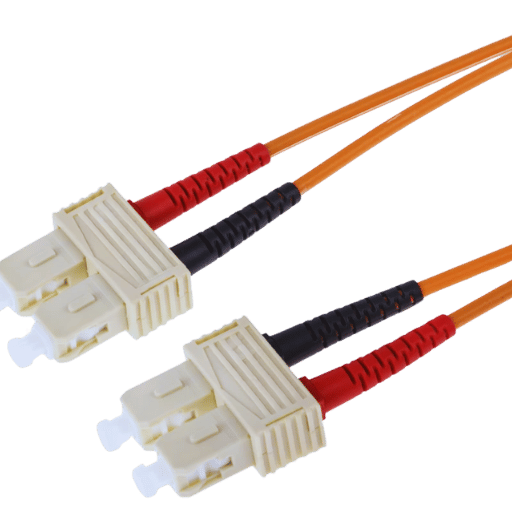
Commonly employed for short-range data transfer, OM1 fiber optic cable is a type of multimode fiber. It has a core diameter of 62.5 microns. When illuminated with LEDs, it can transfer data up to 1 Gbps for distances reaching 275 meters. Furthermore, OM1 fiber optic cable transmits data over distances of 850 nm and 1300 nm. This type of cable is mostly used in old local area networks (LANs), providing a cheap option for moderate bandwidth availability. However, OM1 fiber optic cable has limited compatibility with modern high-speed requirements, making it less ideal for long-term constructions.
Introduction to Fiber Optic Technology
This technology permits telecommunications, the internet, and computer networks to transfer information data more readily and efficiently than ever before due to its enhanced reliability and accelerated speed over copper wiring. Fiber optic technology relies on the physical principle of light transmission, which is that bending is reflection, with optical fibers internally reflecting light and allowing data to travel long distances with minimal loss. Additionally, they have great immunity against electromagnetic interference, making them very efficient while also requiring lower bandwidths, which guarantees their future needs.
The Role of Multimode in Data Transmission
Multimode fiber is essential for efficient data transmission because it facilitates inexpensive communication over medium to short ranges. It permits the simultaneous propagation of multiple light modes through the fiber which makes it useful for high-speed data center and local area network applications. In my opinion, its advantages stem from the ease of installation and smaller system costs when compared to single mode fiber, making it economically viable for many enterprise environments.
Features of OM1 Cable
- Core Size: Light can travel through multiple modes in an OM1 fiber optic cable as its core diameter is 62.5 micrometers resultantly enabling it to support over light propagation.
- Bandwidth Capacity: Adequacy for moderate legacy system needs, and data transmission needs exist because the effective bandwidth is 200 MHz·km at 850 nm and 500 MHz·km at 1300 nm.
- Data Rate and Distance Support: For 850 nm wavelength, an OM1 cable can support up to 1 Gbps data rates within 275 meters and for 1300 nm wavelength, it is up to 550 meters.
- Connector Compatibility: Integrating OM1 into existing networks is simplified as it is compatible with a wide variety of connectors like SC, LC and ST.
- Applications: Enterprise and data centers with local area networks and short range communication systems can utilize OM1 cable as it is reliable on short distances.
- Cost-Effectiveness: Ease of installation with OM1 cables makes them a competitively priced option for upgrading or expanding existing infrastructure.
- Durability and Performance: Reliability in operational environments standards while resisting bends are traits accomplished with OM1 cables.
These features make OM1 cables a sustainable solution for various modern enterprise setups.
Why Choose OM1 Multimode Fiber Cable?
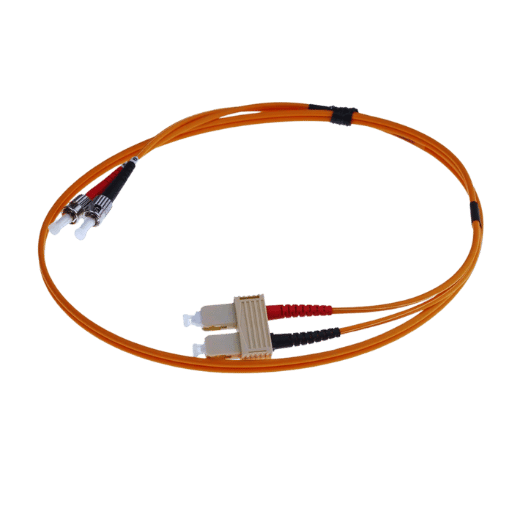
Benefits of Using OM1 Fiber Optic for Networking
Efficiency in Terms of Cost
- From a financial standpoint, businesses operating on tighter budgets may easily find OM1 fiber optic cables as these are more economical compared to the higher graded cables. Also, their cost efficiency is useful when retrofitting or expanding these into existing legacy systems.
Sufficient Bandwidth for Local Applications
- OM1 fiber optic cables can support data transmission of up to 1 Gbps over a distance of 275 meters and 10 Gbps over a distance of 33 meters. This makes them ideal for short-range applications such as inter-office networking, connecting workstations within a data center, or connecting data center servers.
Seamless Integration with Legacy Systems
- OM1 Fiber is a suitable selection for organizations that wish to capitalize on their existing infrastructure since it is cost effective and strategically prudent. OM1 fiber is compatible with older network peripherals such as LED based transmitters, thus reducing the need for expensive upgrades.
OM1 Cables offer Dependable Performance
- OM1 fiber optic cables guarantee reliable performance in any standard operational environment. To help preserve network availability and mitigate severe outage incidents, OM1 cables are designed to be more robust to failures due to their surroundings.
Simplified Installation
- Streamlined deployment is achieved through the ease of installation using OM1 fiber due to its ability to fit in tight spaces or complex cable pathways.
Scalability for Certain Applications
- Although OM1 cables are not meant for high-range, high-volume systems, they can still be seamlessly implemented for local area networks (LANs), structured cabling systems, and for small and medium-sized enterprises.
These advantages further highlight why OM1 fiber continues to be a useful and efficient option for addressing various networking demands, particularly in scenarios that involve financial constraints as well as compatibility considerations.
Comparing OM1 with OM3 and Singlemode Options
Bandwidth and Speed
- OM1 classifies as a legacy system and cost-efficient option, as it enables data transmission speeds of up to 1Gbps over distances of 300 meters.
- A modern data center or high-performance network would benefit from OM3’s support of 10Gbps speeds over 300 meters and 40-100Gbps for shorter distances.
- Singlemode combines long distance data transmission(with distances beyond 10 kilometers) with minimal signal loss. This core is primarily utilized for telecommunication and large scale networks.
Core Diameter
- Due to equipment equipped with LEDs, OM1’s core diameter must be 62.5 micrometers which makes it inefficient for high-speed data transmissions.
- Link spans and higher data rates are amde possible with the use of laser based transmitters on OM3’s core of 50 micrometers enabling it to have longer data spans.
- For best performance in long-distance transmission with superior quality, singlemode must have the smallest core diameter of 8-10 micrometers.
Cost Efficiency
- For low-bandwidth applications over short distances, OM1 proves to be the most cost-efficient.
- For moderate-range networks requiring higher speeds, OM3 is well-balanced in cost and performance.
- Due to specialized applications and advanced capabilities, singlemode core is the heaviest in price.
Applications
- OM1 is the most effective option for local area networks with low-speed data requirements.
- OM3 is widely used in storage area networks, enterprise backbones, and data centers.
- Singlemode is best suited for use on long-haul telecommunication as well as high-capacity networks.
Every type of fiber has specific use cases and the selection pivots on certain criteria in terms of distance, bandwidth, and budget.
How to Install and Maintain OM1 Fiber Optic Cable
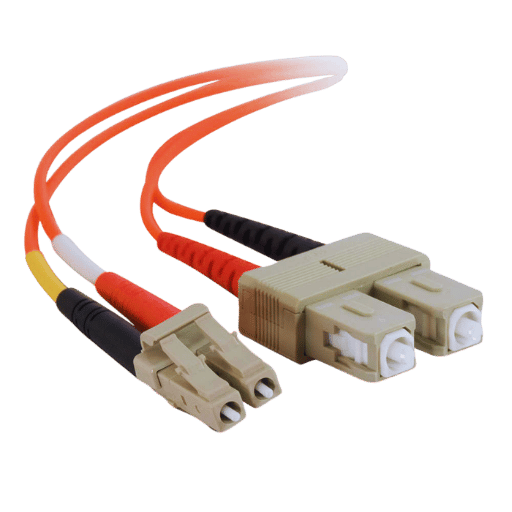
Installation Guidelines for Patch Cables
Check Cable Length
- Trim the patch cable so that there is neither slack nor excess stress, as this could damage connectors or impair performance.
Exercise Caution
- Without breaching the minimum bend radius, take care not to bend the cable any further, as this will lead to signal loss or permanently damaging the fiber strands.
Remove any contaminants
- Ensure the patch connectors are free from dust or debris by cleaning them with a suitable fiber optic cleaning tool prior to installation to maintain signal integrity.
Clamp Properly
- Prevent patch cables from tangling by routing and securing them in cable organizers or trays, while also reducing physical strain on the connector.
Evaluate Connectivity
- Evaluate the signal across the patch cable connection using a fiber optic power meter or any other signal testing equipment post-installation to ensure it is functioning as intended.
Maintenance Tips for Fiber Optic Cables
Regular Inspection
- Check fiber optic cables and connectors for visible signs of damage, bending or wearing at regular intervals. Research suggests that microbends and macrobends in cables might degrade signal quality, with losses of 0.5 dB or higher in more severe cases. As per the manufacturer’s guidelines, ensure cables are routed within the prescribed bend radii.
Clean Connectors Routinely
- Connectors being dusty or contaminated is one of the main culprits for loss of signals. Research indicates that a dust particle as small as 1 µm can cause a lot of damage to the performance levels of the equipment. To avoid deterioration of the material, use alcohol-free cleaning wipes or specialized fiber optic cleaning sticks.
Control of Environment
- Do not expose equipment to harsh environmental conditions such as high humidity, fluctuating temperatures, and UV radiation. Ambient temperature fluctuations have been shown to affect transmission stability; thermal expansion may cause alignment problems for the joints at the connectors. Operate and store the cables within the temperature ranges specified by the manufacturer.
Implement Relief of Strain
- Micros fractures on the fiber core can result due to over tension on cables, causing physical stress, and long term damage to the fiber core. Use strain relief techniques and ensure that there is enough slack in the patch cords to address the movement and vibrations.
Overseeing Signal Performance
- The performance of a link can be tracked using an OTDR or similar tools. An increase in insertion loss and return loss values could imply a problem with the connectors, splicing, or the fiber. A single mode fiber typically should not have a splice loss margin over 0.1 dB for optimal performance.
Schematic Configurations
- All details regarding cable settings should be kept in a single location, and all cables should have clear references. This increases the reliability of the network, lessens the troubleshooting complexity, and lowers the time needed to resolve problems. Reports claim that up to seventy percent of network issues in the market stem from human oversights involving cables, whether it is routing or handling.
With these outlined maintenance practices, organizations can optimize the reliability and performance of fiber optic networks while extending their lifespan.
Understanding Plenum and PVC-Rated Jackets
Plenum and PVC-rated jackets are two distinct types of cable insulation used in network infrastructure. Plenum-rated jackets are intended for use in places where fire control is critical, like drop ceilings and raised floors. These cables are made from low-smoke, flame-retardant materials, which help to minimize the toxic fume emissions during a fire.
On the other hand, PVC-rated jackets are appropriate for general-purpose installation. These are also less costly but burn so easily and produce such thick smoke and toxic fumes that they are unsuitable for air-handling spaces. Selecting the correct type of jacket is critical because of building codes and safety requirements which must be complied with for operational safety.
Exploring Duplex Fiber Optic Patch Cable Configurations
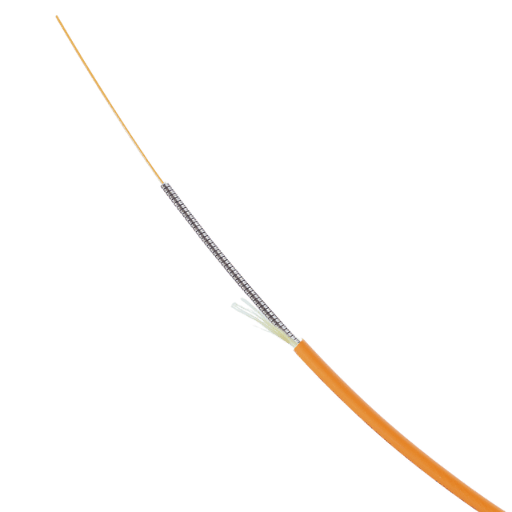
What is a Duplex setup?
A Duplex setup in fiber optics pertains to a system capable of dual data transmission, allowing data transmission and reception at the same time. It uses two fibers, one for transmitting data (Tx) and the other for receiving data (Rx). In modern networks, full-duplex communication is required, including but not limited to network switches, servers, and high-speed internet connections.
Duplex fiber optic cables are categorized as full-duplex and half-duplex. Full-duplex systems are the fastest and with the most optimal resource use because they transmit and receive data at the same time. On the contrary, half-duplex systems send and receive data alternately, introducing lag in real-time applications.
Typically, modern duplex cables are supplied with LC or SC connectors and comply with OM3 or OM4 standards for multimode cables and OS1 or OS2 for single-mode cables. For example, OM3 fibers are popularly known as supporting 10Gbps data rate transmission over 300 meters for duplex configuration, whereas OS2 single mode fibers are claimed to exceed 10km distance in long haul communication.
As with all other types of network topologies, a duplex type topology has its advantages and drawbacks that depend upon the particular network requirements that makes take into account bandwidth, distance, and environmental factors. Ensuring proper grade compatibility between duplex cables and active network devices, organizations can achieve reliable and high-performance access throughout their structure.
Applications of Duplex Fiber Optic in Networking
Duplex fiber optic cables are used in almost all networking activities since they provide high-speed data transmission along with great reliability and scalability. Some examples of their use include:
Data Centers
- The use of fiber optics is crucial in the connections between servers, storage systems, and switches in modern data centers. The ability to provide high bandwidth and ultra-low latency guarantees uninterrupted data flow, which is fundamental for large-scale workloads and virtualization.
Telecommunications
- They are extensively used in telecommunications to establish high-capacity trunks for voice, video, and data services. With the introduction of newer technology, the use of duplex fibers allows transmission to increase up to 400 Gbps and more, thus meeting the need for faster internet connectivity.
Enterprise Networks
- Organizations use duplex fiber optic cables for linking their office buildings as well as building a robust local area network (LAN). Their interoperability makes it possible to integrate them with Ethernet and Fiber Channel technologies, further ensuring that communication within the organization is secure and reliable.
Campus Networks
- Duplex fibers are instrumental in linking multiple buildings within university or corporate campuses. They provide the great bandwidth and reliability to support internet services as well as VoIP systems and other data-sharing platforms over large geographical areas.
Fiber-to-the-Home (FTTH)
- The adoption of Duplex fiber optics in FTTH implementations opens new avenues of ultra-high speed internet access for end users and supports next generation applications such as 4K video streaming, cloud computing, and smart home technologies.
Medical and Research Facilities
- Hospitals and research institutes utilize duplex fiber optics in waiting for rapid transmission of large data files like medical imaging, genetic sequencing results, and other research data. Its stability across systems allows accurate and timely communication of cross system communication.
Military and Aerospace Applications
- Duplex fiber optics are deployed in high sensitive security/environments like Military bases and Aerospace communication systems. Because of their resistance to electromagnetic interference (EMI), and long distance data transmission, duplex fiber optics are ideal for critical and sensitive operations.
Industrial Automation
- Automated Systems, sensors, and control units used in industries depend on the duplex fiber optics for interconnection. Timely communication, operational monitoring, and optimization of production processes require real time data from these fibers.
Supporting new applications like Artificial Intelligence, Robotics, 3D Modeling, and Virtual Reality, Ultrasound Imaging, the duplex fiber optics continue to be the backbone of new technologies requiring more bandwidth, highest speeds, and unmatched when it comes to needle reliability of modern networks.
The Importance of SC Connectors in Duplex Systems
SC connectors are significant components in duplex fiber optic systems due to their ability to provide secure, reliable, and high-performance connections. Their easy push-and-pull snap-in design facilitates less complicated installation and removal, which prevents possible alignment issues; SC connectors have a snap design, so they also maintain low insertion loss and return loss. All connectors with SC configurations are reliable and durable, which endure in situations of high density within network environments where data transmission is required persistently and more efficiently, making SC connectors an industry standard. In various applications, SC connectors are important in preserving the integrity of duplex systems.
Common Multimode Fiber Cable Issues and Solutions
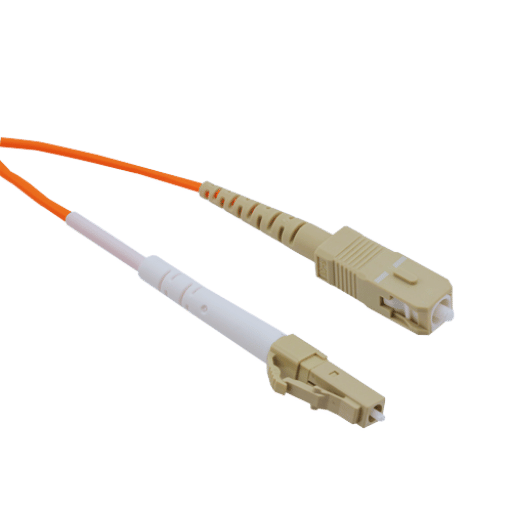
Troubleshooting Fiber Optic Patch Cable Problems
Even though fiber optic patch cables form the backbone of information technology systems for ensuring reliable data transmission, they may, at times, suffer from performance degrading problems. Some of the most frequent problems and their solutions, backed by the latest industry standards and technical information, are shown below:
Excessive Signal Loss (Attenuation)
- Transmission quality can be significantly worsened by excessive signal loss (attenuation). In most cases this problem occurs because of dirt, dust, or scratches on the connectors or not adequately cleaning the fiber ends. Make sure that the connectors are cleaned with isopropyl alcohol and lint-free wipes or with specialized cleaning tools designed for fiber optics. In addition, ensure that the cables are checked with a fiber optic inspection scope to reveal any physical defects.
As defined in ANSI/TIA-568, multimode fiber should have typical attenuation values of 3.5 dB/km at 850 nm and 1.5 dB/km at 1300 nm.
Incompatible Connectors
- Incompatible connectors may increase insertion loss and together with other losses greatly increase costs. Always check the connector type SC, LC or ST that is to be used and make sure that it corresponds with system specifications. Such incidents can be avoided by using standard adapters and proper alignment during patching together with their respective standards and guidelines.
Microbending and Macrobending
- Bends that are too tight or more pronounced than designated standard might exceed the maximum bending radius inflicting damage on the signal. Industry practices denote bending radii of at least ten times the outer diameter of the cable to be retained while in operation. Avoid tight loops and undue tension on the cable.
Improper Deployment
- Using the incorrect type of cable—singlemode fiber for multimode applications, for example—can be problematic, as does ignoring other factors like temperature and moisture. To prevent hindering performance with high-speed applications such as 40G and 100G Ethernet, OM3 and OM4 multimode fibers should be used.
Return and Reflection Loss
- For high return loss, reflection is frequently too great due to the bad polish of the connectors or the fact that they are not being aligned properly. To lower reflectance, which is generally at -65 dB for systems of higher performance, APC connectors should be employed since they guarantee excellent return loss.
Stretching or Crushing of Cable
- Damage to a fiber core occurs if excessive tensile force or compression is indiscriminately applied. Cables and optic fiber can be shielded using ducts and conduits, following the guidelines on maximum tensile loads. For patch cables, these are typically around 50 N (Newton).
Taking these preventive measures and following the specified troubleshooting procedures will help limit the downtime and enhance the performance of the system. Routine maintenance using OTDRs (Optical Time-Domain Reflectometers), as well as abiding by industry regulations, promotes dependable and ever-ready long term services in fiber optic networks.
Impact of Bandwidth on Fiber Performance
Bandwidth is of utmost importance for the performance of fiber optic networks since it defines the available data transmission for a specific period. Higher bandwidth enables higher data transfer rates and additional users as well as simultaneously supported applications like video streaming and cloud computing. The very nature of fiber optic cables enables them to support extraordinarily high bandwidth because of low signal attenuation and immunity to electromagnetic disturbance. Network topology, signal dispersion, and the quality of the optical elements in the system are among the many factors that can impact bandwidth utilization. Also maximizing performance over the provided bandwidth requires proper installation, maintenance, and high-quality components.
When to Consider Riser-Rated Cables
Non-plenum areas define the region of a building where riser-rated cables are employed while vertically routing cables between floors. Riser-rated cables, which are vertical installation-rated, restrict the fire from spreading to other floors of a building, hence observing safety measures for vertical fire containment. These cables are often located in elevators, shafts and walls and other riser spaces which do not require plenum rated cables and therefore ensure building safety code compliance.
Frequently Asked Questions (FAQs)
Q: What is an OM1 fiber optic cable?
A: An OM1 fiber optic cable belongs to the group of multimode fiber optic cables and is utilized for communication and data transmission over short distances. It can, for instance, support 1 Gigabit Ethernet data rates, making it very useful for LANs (Local Area Networks).
Q: How does a multimode OM1 fiber optic cable differ from OM2?
A: A multimode OM1 fiber optic cable usually has a bone diameter with a larger core size of 62.5 micrometers compared to OM2’s 50 micrometers, so it can support legacy networks. On the other hand, OM2 is thinner but offers higher bandwidth and better performance over long distances.
Q: What is the significance of a riser-rated jacket in OM1 cables?
A: Riser rated jacket or OFNR (Optical Fiber Nonconductive Riser) is made to limit flame spread between floors of a building. It is critical for indoor cable installations since the cable cannot pass through vertical shafts or floors.
Q: Why would someone choose an OM1 duplex fiber optic cable?
A: An OM1 duplex fiber optic cable comprises two fibers enabling data transmission and reception at the same time which is advantageous in bidirectional communication systems.
Q: What is the difference between PVC and Plenum-rated jackets in fiber optic cables?
A: PVC jackets are suitable for general indoor use, while plenum rated jackets or OFNP, as described, are specific for areas that transport air for heating, ventilation, and air conditioning (HVAC) systems. OFNP jackets are safer for such spaces because they have a higher fire resistance and emit less smoke.
Q: Is there anyone that typically uses OM1 fiber optic cables?
A: Yes, there are numerous users of OM1 fiber optic cables, with the most common users being institutions, enterprises, and individuals. Attachments compatible with OM1 fiber optic cables are LC, SC, ST, and MTRJ. LC connectors are well known for their small form factor and high performance, while SC connectors are popular for their resistance and high ease of use.
Q: How are fiber patch cables utilized in network setups?
A: Fiber patch cables are responsible for connecting network devices to a patch panel or connecting devices like a router, switch, and optical transceiver directly with each other. These cables maintain the network’s flexibility and performance.
Q: In the context of OM1 cables, what does Corning optical fiber mean?
A: Corning is known as an important manufacturer of optical fibers that offers a range of high quality and reliable optical fiber solutions. The use of Corning optical fiber in OM1 cables guarantees its performance, longevity and compliance with industry standards.
Q: Which applications take advantage of utilizing OM1 multimode fiber optic cables?
A: OM1 multimode fiber optic cables are best suited for short distance data transmission including telecommunications, data center operations, and enterprise LAN networks with moderate data transmission distances and bandwidth requirements.
Q: What is the purpose of using a wall mount in relation to fiber optic cables?
A: A wall mount serves to hold fiber optic cables and related equipment in a fixed position which enhances order and accessibility, while also shielding the cables from damage, weather, and other environmental hazards.
Reference Sources
Multi-mode optical fiber
Optical fiber
Patch cable
Post Views: 2,113




